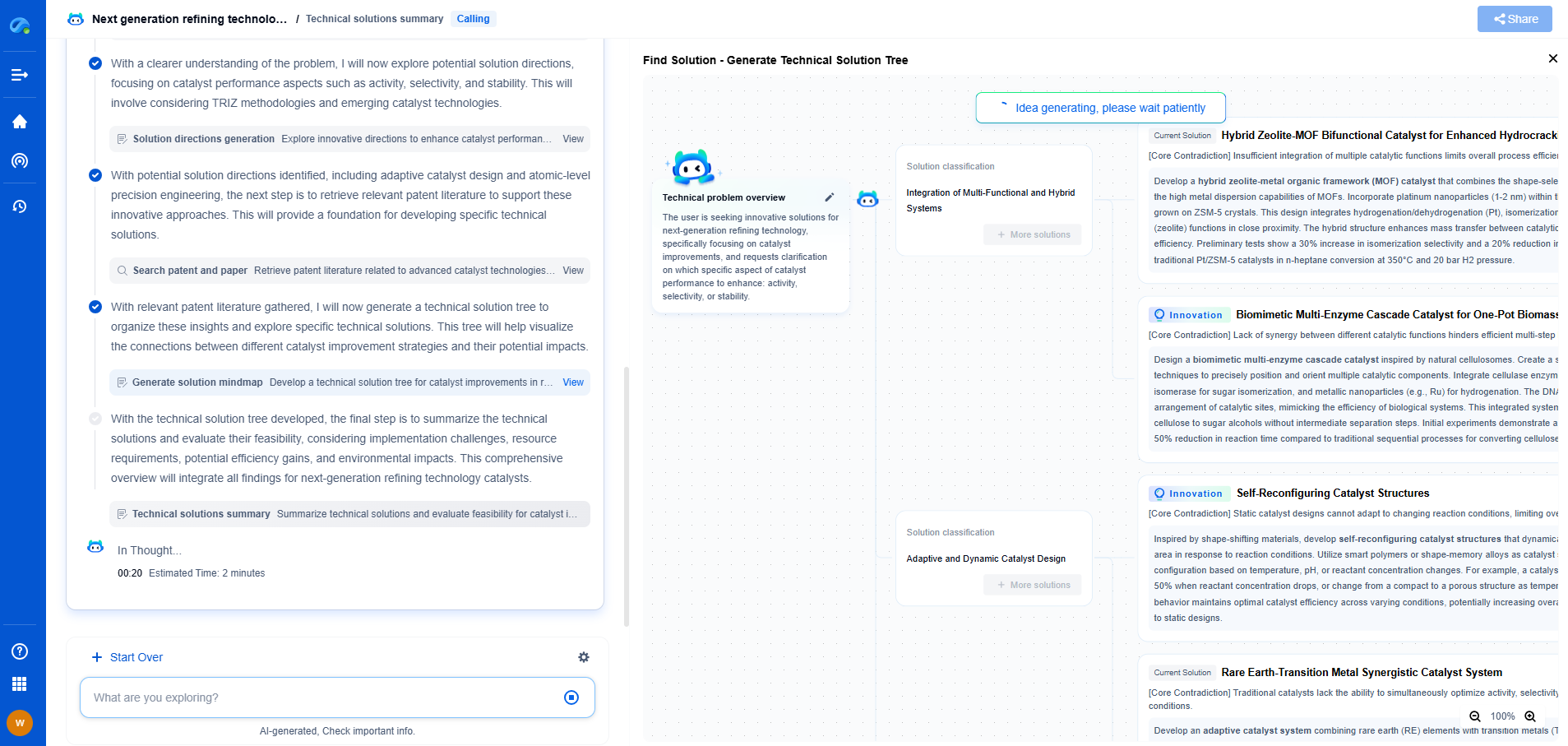What Is the Role of Polymers in Automotive Parts and Materials?
JUL 3, 2025 |
Polymers have become a cornerstone of the automotive industry, transforming how vehicles are designed, manufactured, and maintained. Their versatility, durability, and lightweight nature make them an ideal choice for various automotive applications. This article delves into the role of polymers in automotive parts and materials, highlighting their benefits, applications, and the future of polymer use in the automotive sector.
The Advantages of Polymers in Automotive Applications
One of the most significant advantages of using polymers in the automotive industry is their lightweight nature. By replacing heavier materials like metals, polymers contribute to significant weight reduction in vehicles. This reduction is crucial for improving fuel efficiency and reducing emissions, aligning with the global push for more environmentally friendly transportation solutions.
Polymers also offer remarkable durability and resistance to corrosion, which is essential for the longevity of automotive parts. Unlike metals that can rust over time, polymers are not susceptible to corrosion, ensuring that parts made from these materials maintain their integrity even in harsh environmental conditions.
Additionally, polymers provide excellent design flexibility. They can be molded into complex shapes and structures, allowing for innovative design solutions and the integration of multiple functions within a single part. This flexibility not only enhances the aesthetic appeal of vehicles but also contributes to more efficient manufacturing processes.
Applications of Polymers in Automotive Parts
Polymers are used extensively across various automotive parts, each chosen for its unique properties and benefits. Some of the most common applications include:
1. Exterior Components: Polymers are widely used in bumpers, fenders, and body panels due to their impact resistance and ability to absorb energy during collisions. These components benefit from polymers' lightweight, reducing the overall vehicle weight while maintaining safety standards.
2. Interior Elements: Inside the vehicle, polymers are used for dashboards, door panels, seating, and trim components. Their versatility allows for the creation of aesthetically pleasing designs that can be customized to match consumer preferences. Furthermore, polymers offer excellent insulation properties, contributing to a quieter and more comfortable cabin environment.
3. Under-the-Hood Parts: Polymers play a critical role in engine components, such as air intake manifolds, valve covers, and fuel system components. Their resistance to heat and chemicals makes them ideal for these demanding applications, where they must endure extreme temperatures and exposure to various fluids.
4. Electrical and Electronic Systems: With the increasing incorporation of electronic systems in vehicles, polymers have become vital in insulating and protecting electrical components. They are used in connectors, housings, and wire coatings, ensuring reliable performance and safety.
The Future of Polymers in Automotive Engineering
As the automotive industry continues to evolve, the demand for more sustainable and efficient materials will only increase. Polymers are expected to play an even more significant role in the development of electric and hybrid vehicles. These vehicles require lightweight materials to maximize range and efficiency, making polymers an ideal choice for various components.
Moreover, advancements in polymer technology are leading to the development of bio-based and recyclable polymers, further enhancing their environmental credentials. These innovations are set to revolutionize the industry by reducing the carbon footprint of automotive manufacturing and promoting a more circular economy.
In conclusion, polymers are integral to the advancement of automotive technology, offering unparalleled benefits in terms of weight reduction, durability, and design flexibility. As the industry continues to push towards more sustainable and efficient vehicles, the role of polymers will undoubtedly expand, driving further innovation and progress in automotive engineering.
Transform Polymeric Innovation with Patsnap Eureka
From biodegradable polymers to high-performance composites, the world of polymeric compounds is evolving faster than ever—driven by the demands of sustainability, functional customization, and global IP competition. Whether you're exploring novel copolymer architectures, optimizing polymerization techniques, or tracking material patents in bioplastics, time-to-insight is everything.
Patsnap Eureka, our intelligent AI assistant built for R&D professionals in high-tech sectors, empowers you with real-time expert-level analysis, technology roadmap exploration, and strategic mapping of core patents—all within a seamless, user-friendly interface.
Whether you're working on next-gen packaging films, bio-based resins, smart polymers for electronics, or new thermal-resistant composites, Eureka accelerates your journey from idea to patent to product—with unmatched clarity and speed.
🔍 Experience how Eureka can power your polymer R&D with AI intelligence—start your free trial today and unlock the future of materials innovation.
- R&D
- Intellectual Property
- Life Sciences
- Materials
- Tech Scout
- Unparalleled Data Quality
- Higher Quality Content
- 60% Fewer Hallucinations
Browse by: Latest US Patents, China's latest patents, Technical Efficacy Thesaurus, Application Domain, Technology Topic, Popular Technical Reports.
© 2025 PatSnap. All rights reserved.Legal|Privacy policy|Modern Slavery Act Transparency Statement|Sitemap|About US| Contact US: help@patsnap.com

